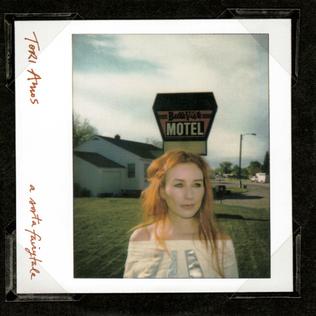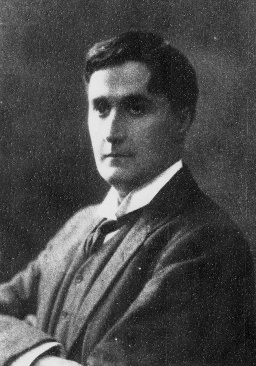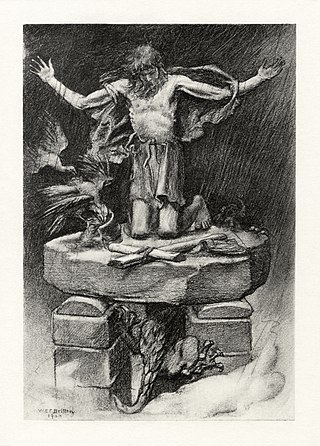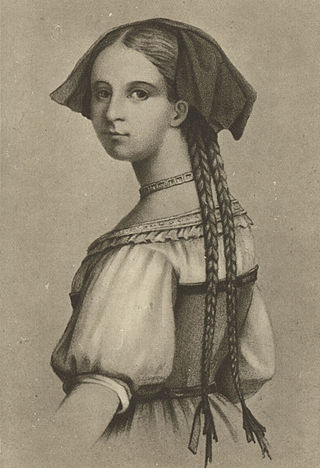
"Haddocks' Eyes" is the nickname of the name of a song sung by The White Knight from Lewis Carroll's 1871 novel Through the Looking-Glass, chapter VIII.

"The Raven" is a narrative poem by American writer Edgar Allan Poe. First published in January 1845, the poem is often noted for its musicality, stylized language, and supernatural atmosphere. It tells of a distraught lover who is paid a mysterious visit by a talking raven. The lover, often identified as a student, is lamenting the loss of his love, Lenore. Sitting on a bust of Pallas, the raven seems to further antagonize the protagonist with its constant repetition of the word "Nevermore". The poem makes use of folk, mythological, religious, and classical references.

"My Last Duchess" is a poem by Robert Browning, frequently anthologised as an example of the dramatic monologue. It first appeared in 1842 in Browning's Dramatic Lyrics. The poem is composed in 28 rhyming couplets of iambic pentameter.

King Claudius is a fictional character and the main antagonist of William Shakespeare's tragedy Hamlet. He is the brother to King Hamlet, second husband to Gertrude and uncle and later stepfather to Prince Hamlet. He obtained the throne of Denmark by murdering his brother with poison and then marrying the late king's widow. He is loosely based on the Jutish chieftain Feng who appears in Chronicon Lethrense and in Saxo Grammaticus' Gesta Danorum. There has never been an actual Danish king of that name.

Mae Marsh was an American film actress whose career spanned over 50 years.

"A Sorta Fairytale" is a song written and performed by singer-songwriter Tori Amos. It was released as the first single from her 2002 album Scarlet's Walk. The song reached number 14 on the Billboard Bubbling Under Hot 100 Singles chart, and number two on the Triple A chart. The song has since been featured in episodes of the television shows Nip/Tuck and The L Word. There are three commercially released versions of the song: the album version (5:30), the 101 Mix (4:00) and the original single version (4:01). It was released as a CD single (UK/Canada) with "Operation Peter Pan" as the B-side, and as a DVD single (US) with the music video, co-starring Adrien Brody.
"The Face upon the Barroom Floor", aka "The Face on the Floor" and "The Face on the Barroom Floor", is a poem originally written by the poet John Henry Titus in 1872. A later version was adapted from the Titus poem by Hugh Antoine d'Arcy in 1887 and first published in the New York Dispatch.

The Five Mystical Songs are a musical composition by English composer Ralph Vaughan Williams (1872–1958), written between 1906 and 1911. The work sets four poems by seventeenth-century Welsh poet and Anglican priest George Herbert (1593–1633), from his 1633 collection The Temple: Sacred Poems. While Herbert was a priest, Vaughan Williams himself was an atheist at the time, though this did not prevent his setting of verse of an overtly religious inspiration. The work received its first performance on 14 September 1911, at the Three Choirs Festival in Worcester, with Vaughan Williams conducting.

The World's Wife is a collection of poetry by Carol Ann Duffy, originally published in the UK in 1999 by both Picador and Anvil Press Poetry and later published in the United States by Faber and Faber in 2000.
Lo, the full, final sacrifice is a festival anthem for SATB choir and organ, composed by Gerald Finzi in 1946. The work was commissioned by the Revd Walter Hussey for the 53rd anniversary of the consecration of St Matthew's Church, Northampton. Finzi orchestrated the piece for its performance at the Three Choirs Festival in 1947. Since then it has become a staple of the Anglican choral tradition. Performance time ranges between fourteen and eighteen minutes.
"You Laughed and Laughed and Laughed" is a poem by Nigerian writer Gabriel Okara. One of the most popular in his oeuvre, it is a frequent feature of anthologies, such as A New Book of African Verse edited by John Reed and Clive Wake. "The piece belongs with the best of Senghor's nostalgic verse," wrote Michael J. C. Echeruo in a tribute to Okara on the occasion of his 70th birthday, "with the militancy of many of David Diop's lyrics, and certainly with J. P. Clark's 'Ivbie', another of my favorite African poems. Okara's poem is more relaxed than these, however, more ironic, less tortured. In some ways, of course, it is less urgent, less strident, less involved. If Clark's 'Ivbie' was complex and for good reason, You laughed, and laughed, and laughed seemed also appropriately straightforward: proud without arrogance, hurting without showing it, and blunt without rudeness." The first of Okara's poems that it was Echeruo's pleasure to read, it was also in his opinion the most enduring. The poem is sometimes wrongly attributed to South African writer Dennis Brutus.

"Oenone" or "Œnone" is a poem written by Alfred Tennyson in 1829. The poem describes the Greek mythological character Oenone and her witnessing incidents in the life of her lover, Paris, as he is involved in the events of the Trojan War. "Oenone" was inspired by Tennyson's trip to Spain, where he visited the Pyrenees mountains. It is considered the simplest of Tennyson's dramatic monologues.

"St Simeon Stylites" is a poem written by Alfred Tennyson in 1833 and published in his 1842 collection of poetry. The poem describes the actions of St. Simeon Stylites, a Christian ascetic saint who recounts his various physical acts in hopes that he has earned his place in heaven. It captures Tennyson's feelings following the death of a close friend, Arthur Hallam, and contains feelings of self-loathing and regret. The work has ironic overtones that give it the appearance of a satirical work.

Poems on Various Subjects, Religious and Moral by Phillis Wheatley, Negro Servant to Mr. John Wheatley, of Boston, in New England is a collection of 39 poems written by Phillis Wheatley, the first professional African-American woman poet in America and the first African-American woman whose writings were published.

Farud or Forud was an ancient king of Kelat in his early youth and makes up a chapter in the Shahnameh "The Book of Kings" (940-1020) by Ferdowsi where he is mentioned as the brother of Kai Khosrow.

"Welcome and Farewell" is a poem by Johann Wolfgang von Goethe from the collection Sesenheimer Lieder. It was published for the first time in 1775 in the women's magazine Iris. Franz Schubert set it to music as a lied (D.767).
"The Ballad of Cassandra Southwick" is a poem written by American Quaker poet John Greenleaf Whittier in 1843. It details the religious persecution of Cassandra Southwick's youngest daughter Provided Southwick, a Quaker woman who lived in Salem, Massachusetts and is the only white female known to be put up at auction as a slave in the United States.

The ancient legend of Khamba and Thoibi is a classic, as well as one of the epic cycles of incarnations of Meitei mythology and folklore, that is originated from Ancient Moirang kingdom of Ancient Kangleipak . It is referred to as the "National Romantic Legend of Manipur" by Padma Vibhushan awardee Indian scholar Suniti Kumar Chatterjee.















